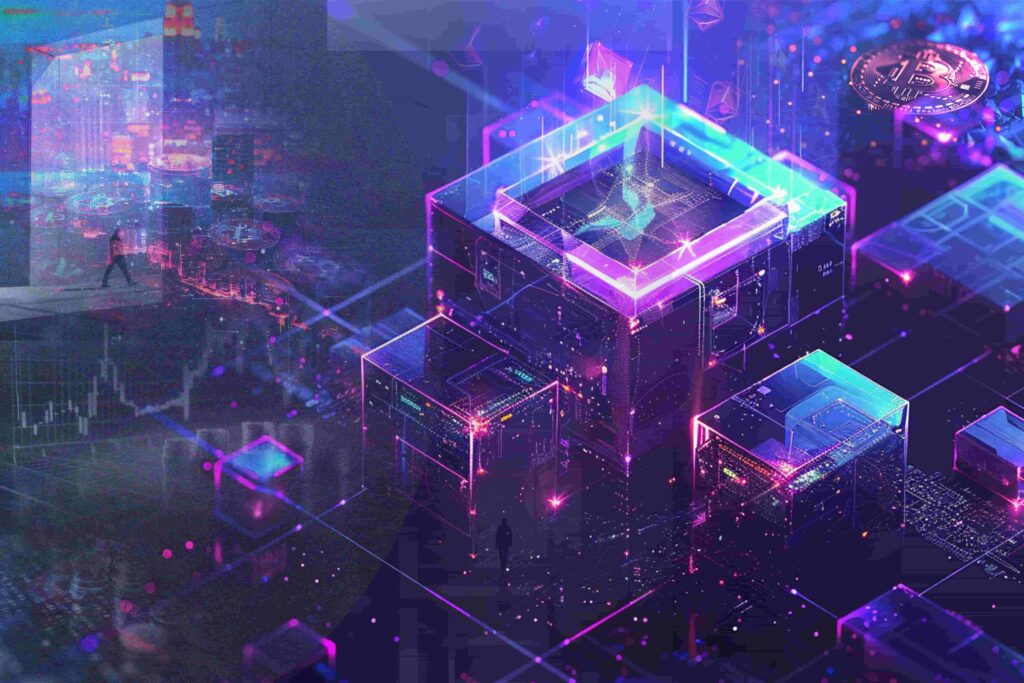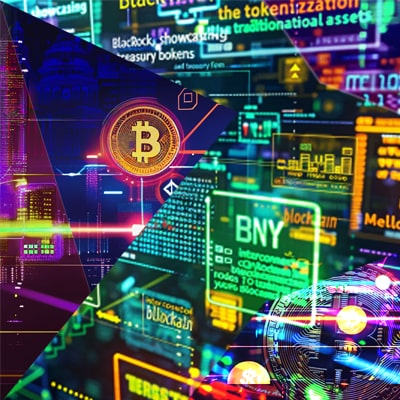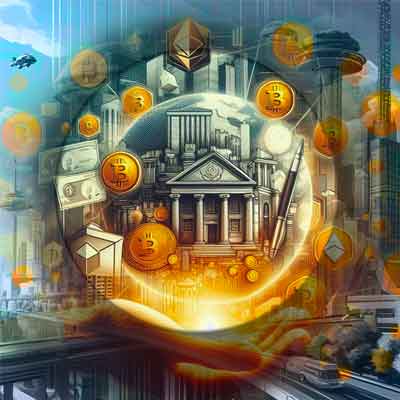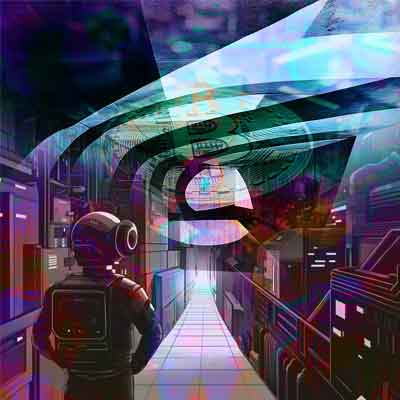Real World Assets (RWAs) Primer: Crypto’s Ultimate Use Case?
Jun. 29, 2024.
8 mins. read.
2 Interactions
Crypto's next big thing? How tokenizing real-world assets like real estate and bonds could unlock liquidity and transform investing. Experts predict a $5-10 trillion RWA market by 2030.
Introduction
With the Bitcoin Halving and Bitcoin and Ethereum spot ETF approval in the rear view mirror in mid 2024, crypto investors’ are now asking what’s next for the world of Decentralized Finance (DeFi).
The recent regulatory approval of Ethereum can help spread one of the biggest crypto narratives for 2024, known as Real World Assets, or RWAs in short. These hybrid financial assets are offering investors a unique opportunity to diversify their portfolios and tap into the potential of tokenizing traditional financial assets.
The RWA market is expected to experience significant growth in the coming years; some predict a 5-10 trillion USD market cap by 2030. As more investors seek to bridge the gap between traditional finance and the digital realm, RWAs are emerging as an attractive option for those looking to invest in tangible assets while enjoying the benefits of blockchain technology. It’s easier to understand, less volatile and can unlock all the benefits that come with decentralized networks.
Let’s dive in with a primer on RWAs.
What are RWAs?
RWAs are physical or non-physical assets from the real world that are tokenized and represented on a blockchain. This can include a wide range of assets, such as
- real estate,
- precious metals,
- stocks,
- bonds,
- commodities,
- art, and
- collectibles
When these assets become tokens, they become more accessible, tradable, and divisible within the crypto ecosystem, opening up new opportunities for investors who may have previously been excluded from certain markets by high barriers to entry, or by lack of liquidity. They can be traded 24/7 from anywhere in the world, without geographical or technological barriers.
How are Real World Assets tokenized?
The process of tokenizing real-world assets can get very complex, but these are the broad strokes:
- First, the asset must be appraised to determine its value.
- Next, a legal framework is established to define the rights and responsibilities of token holders.
- The token is then issued on a blockchain platform, making it available for trading.
Platforms like Cogito, a SingularityNET ecosystem partner, are simplifying this process for investors, providing user-friendly interfaces and streamlined workflows for creating and managing RWA tokens.
Why are RWAs Gaining Popularity?
While they’re not as sexy as other crypto trends such as AI cryptocurrencies, GameFi and memecoins (and even DePIN), there are several reasons why RWAs are touted as the ultimate use case for blockchain technology.
- They’re stable
RWAs introduce real, tangible value into the often volatile crypto market, providing a level of stability that pure cryptocurrencies may lack.
- They bridge the gap with TradFi
The involvement of major players like BlackRock is bringing massive growing institutional interest in RWAs, potentially leading to mainstream adoption.
- They bring liquidity to assets
Tokenization allows previously illiquid assets to be traded 24/7 on crypto exchanges, giving investors greater flexibility and liquidity.
- They make TradFi assets more accessible
RWAs lower the barriers to entry for high-value investments by enabling fractional ownership, making these assets more accessible to a wider range of investors.
BlackRock’s RWA Plans
Earlier this year, BlackRock, the world’s largest asset manager, doubled down on its long-term plans for crypto by announcing it was entering the RWA market. Through a partnership with Coinbase, BlackRock launched BUIDL (BlackRock’s USD Institutional Digital Liquidity Fund) a fund investing in tokenized treasuries and repos.
This move validates RWAs as a viable investment opportunity, and could potentially accelerate mainstream adoption. In previous years US regulators like the SEC have come down hard on previous attempts to tokenize securities, such as securitized token offerings (STOs), and prosecuted exchanges like Binance and Kraken.
With BlackRock’s vast network and massive influence on Capitol Hill, the company could bring significant capital and credibility to the space, driving growth and attracting new investors. The collaboration between a traditional financial giant and a crypto exchange is crucial to bridging the gap between the two worlds.
In fact, with the Ethereum spot ETF now approved, many crypto experts believe that BlackRock’s real ambitions for crypto stretch far beyond just ETFs – that they ultimately aim to tokenize all real world assets! Just listen to how their CEO Larry Fink waxes lyrical on tokenization here.

Top RWA Projects in 2024
Several notable projects and platforms are leading the way in the RWA space, each offering unique features and benefits for investors.
Ondo Finance: Tokenizing Traditional Assets
Ondo Finance is currently the biggest player in the RWA space with a market cap of $1.7 billion. It leads the pack thanks to its ability to bridge TradFi and DeFi. Ondo’s partner with established financial institutions to help ensure the security and stability of tokenized assets.
Ondo focuses on tokenizing traditional assets like corporate bonds and treasuries, and works with BlackRock, moving nearly $100 million over to the BUIDL network. The platform aims to provide investors with access to these assets through a user-friendly interface, making it easier for them to diversify their portfolios.
Mantle: Bringing Real Estate to the Blockchain
Mantle is a platform that focuses on tokenizing real estate assets, allowing investors to gain exposure to this traditionally illiquid market through fractional ownership. The platform uses blockchain technology to ensure the security and transparency of these investments, providing investors with a new way to participate in the real estate market without the large upfront capital or extensive paperwork that would be required to buy houses or commercial buildings.
RealT
RealT is another platform that tokenizes real estate, turning ownership of properties into digital tokens, allowing people to invest in fractional ownership, and trade with less friction. Like Mantle, RealT is making it easier for investors to access the real estate market without the need for large upfront investments or lengthy paperwork processes.
Pendle: Unlocking Yield Opportunities
Pendle is a platform that is focused on unlocking yield opportunities in the RWA market. The platform achieves this by tokenizing future yield, allowing investors to buy and sell the rights to future cash flows from various assets.
This innovative approach provides investors with a new way to generate passive income and potentially earn higher returns than traditional fixed-income investments. Pendle’s platform is designed to be user-friendly and accessible, making it easier for investors to participate in the RWA market and take advantage of the unique yield opportunities it offers.
MakerDAO
Stablecoins are a core component of a resilient RWA market. As such, MakerDAO is playing an important role by using RWAs as collateral to stabilize the value of its DAI stablecoin.
By accepting real-world assets as collateral, MakerDAO is able to create a more stable and reliable stablecoin that is backed by tangible value. This innovative approach has helped to establish MakerDAO as a leader in both the RWA and stablecoin spaces, paving the way for other projects to follow suit. MakerDAO has restored much-needed trust in algorithmic stablecoins following the brutal 2022 demise of Terra Luna that wiped tens of billions from investor accounts.
Centrifuge
Centrifuge is another notable player in the RWA market, offering a platform for tokenizing and financing real-world assets like invoices and loans. It unlocks liquidity and provides new financing options for businesses and investors alike.
SingularityNET’s Cogito Gets RWA License
Cogito, a SingularityNET ecosystem partner, is another sleeping giant in the RWA market that is starting to wake up, making huge strides in tokenizing real-world assets in 2024. Recently, Cogito obtained a tokenized fund license from the Cayman Islands Monetary Authority (CIMA), becoming one of the first companies to offer fully regulated RWA investment products.
Cogito is committed to making RWAs accessible to a wide range of investors, including both institutional and retail investors. The platform offers both crypto and fiat on-ramps, making it easy for investors to purchase RWA tokens using their preferred currency. This accessibility is key to driving adoption and growing the overall market for RWAs.
Cogito’s approach to RWAs is unique in several ways:
- The platform offers a range of innovative investment products, including the TFUND (tokenized treasury bonds), GFUND (tokenized green bonds), and XFUND (an AI-managed basket of tech stocks).
- These products are designed to cater to different investor preferences and risk profiles, providing a diverse range of options for those looking to invest in RWAs.
- Importantly, Cogito is leveraging the power of artificial intelligence to help manage and optimize its RWA investments. By using AI algorithms to analyze market data and identify investment opportunities, Cogito is able to make more informed decisions and potentially generate higher returns for its investors.
Conclusion
There’s no room left for doubt: Real World Assets are here to stay. In fact, they might dominate the crypto sector by the end of the decade. With the potential to introduce real, tangible value into the digital asset ecosystem, RWAs offer investors a compelling opportunity to diversify their portfolios and gain exposure to a wide range of assets.
As more institutional behemoths like BlackRock enter the market and innovative platforms like Cogito continue to develop new investment products and services, the future looks bright for RWAs. While there are certainly challenges and risks to be aware of, such as regulatory uncertainty and the need for robust security measures, the potential benefits of RWAs are simply too great to ignore.
Let us know your thoughts! Sign up for a Mindplex account now, join our Telegram, or follow us on Twitter.


.png)

.png)


.png)






0 Comments
0 thoughts on “Real World Assets (RWAs) Primer: Crypto’s Ultimate Use Case?”